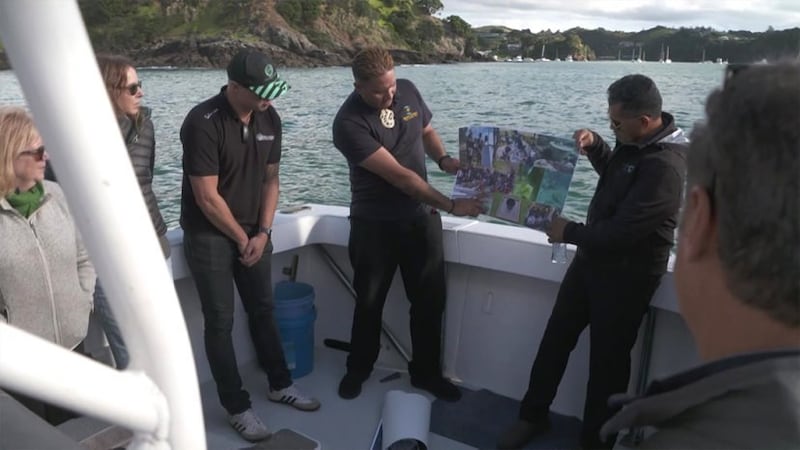A new, invasive seaweed, Caulerpa, has hit the Bay of Islands - and Northland iwi are worried it could wipe out their seafood beds.
Caulerpa can grow from a piece the size of a coin to cover an area the size of a rugby field in just a few weeks, smothering shellfish such as cockles, mussels and oysters.
Biosecurity New Zealand, mana whenua, and the Northland Regional Council are working together on the next steps after divers searching the waters around Te Rāwhiti, the Bay of Islands, found a substantial quantity of exotic Caulerpa seaweed, suggesting it's probably been in the area for a number of seasons.
Caulerpa has been found in roughly half of the mainland spots investigated, including washed up on a beach at Omākiwi Cove.
Mana whenua may also impose a rāhui.
Biosecurity New Zealand’s deputy director-general Stuart Anderson says, while the find of large areas of exotic Caulerpa is disappointing, it isn’t unexpected.
First found at Aotea
"Climate change, warmer temperatures and the ease of international movement will continue to present biosecurity challenges but we’re committed to work through them with our partners, including local councils and mana whenua.
"We expect to have a controlled area notice (CAN) in place next week for a defined area around Omākiwi in the Bay of Islands, which will set restrictions and conditions.
"The extent of the CAN will be further reviewed when delimiting surveillance in the area is completed by the end of next week, weather permitting.
According to Biosecurity NZ, Caulerpa was first discovered at Aotea/Great Barrier Island in July 2021, then at Ahuahu/Great Mercury Island.
Biosecurity NZ is asking anyone who is going out to sea to help stop the spread by checking gear for seaweed and putting it straight back in the ocean.


